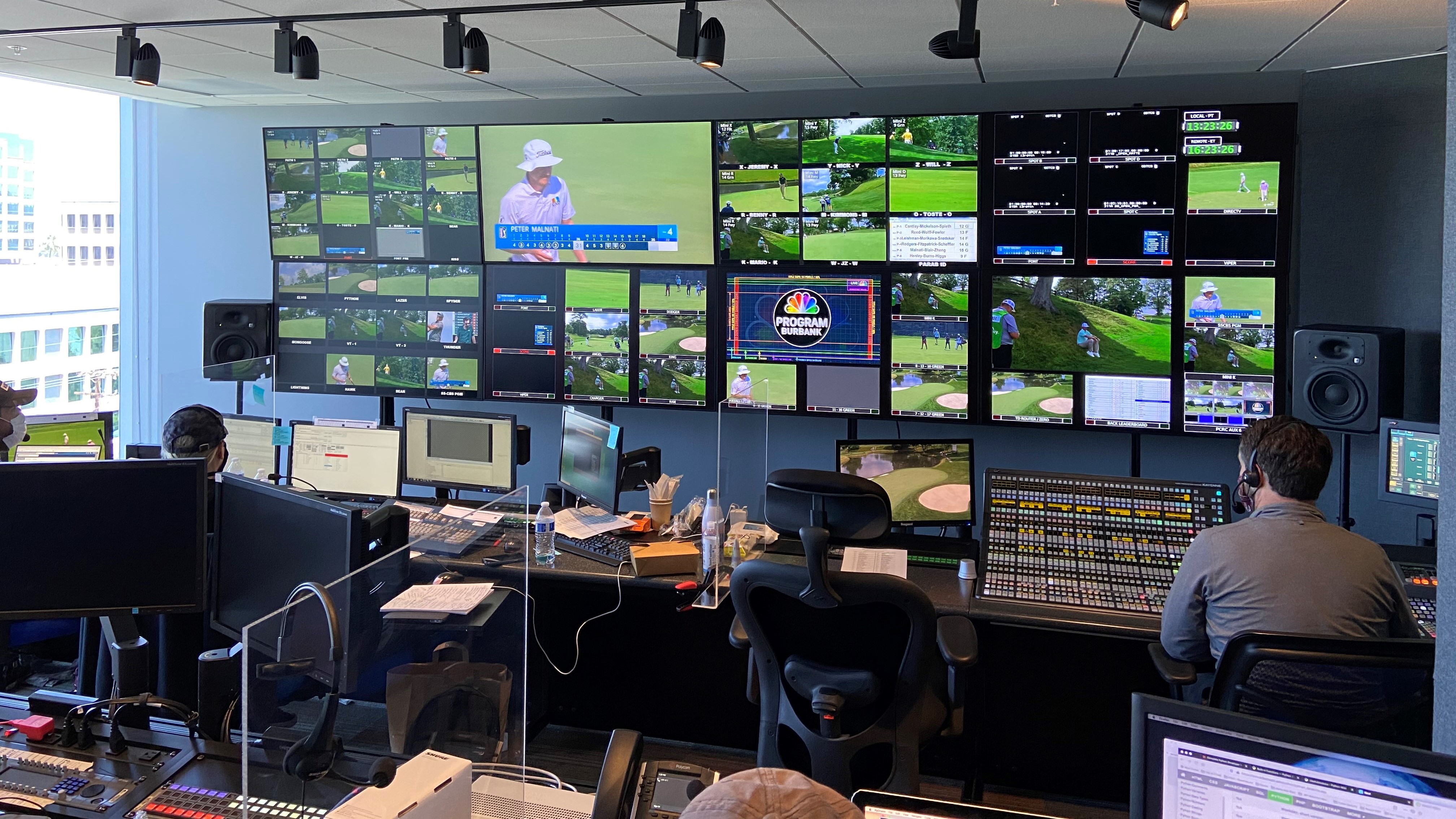COVID-19 Accelerates Cloud-Based Sports Production, Says Tata Executive
Add at-venue sports production to the list of pandemic changes, says Dhaval Ponda

Back from the COVID-19 hiatus, the production of live televised sports has contributed to a bit of normalcy for millions of fans left gameless and homebound by the pandemic.
But things are different. Cardboard cutouts populate seats around home plate and canned crowd noises punctuate touchdowns. Things, too, are different when it comes to how games are being produced during the pandemic, says Dhaval Ponda, global head, Media and Entertainment Services for Tata Communications.
The outbreak has simultaneously accelerated and altered REMI, or remote integrated production, driving producers not only to minimize crew at venues but also to push past centralized production to its virtualized equivalent that makes working from home possible, he says.
Ponda should know. Tata Communications offers a product portfolio that caters to broadcasters and sports authorities in need of live sports contribution and distribution services, cloud-based virtualized production workflows and end-to-end for Media & Entertainment tech services.
In this interview, Ponda discusses the changes he has witnessed since the outbreak in how live events like sports are produced, the impact of COVID-19 on the uptake of a virtualized alternative to rolling OB trucks to venues and what’s likely to happen to live sports production once the pandemic has passed.
(An edited transcript.)
TVTechnology: Remote production has taken on a whole new—or perhaps more accurately stated expanded—meaning in television since the COVID-19 outbreak hit. What are the top technical challenges when it comes to producing live video when talent and crew are widely dispersed?
Get the TV Tech Newsletter
The professional video industry's #1 source for news, trends and product and tech information. Sign up below.

Dhaval Ponda: I would say there are a top three when it comes to technical challenges. The first one revolves around the workflow.
We are changing the entire workflow. Instead of that team of between 40 and maybe 200 traveling to the venue, events are being produced out of a remote production hub. In the post-COVID world we are increasingly deploying that team in their homes.
This distributed workflow requires a different workflow in terms of how live content passes through.
The second challenge centers on virtualization of production equipment and hardware. Production teams are now relying on virtualized services, and that’s a big shift. The media industry has some work to do when it comes to embracing this virtualization of services.
Instead of going to a gallery, members of the production team are working from home, and they have to rely on the broadband at their particular location to access those virtual services.
The third aspect is mainly around the popularity of short-forms and features, which have relied on being at the venue. For example, a quick commentary and a highlight video of a certain event at a match is done locally from EVS hardware located on site.
So, these short-forms and features for a given event are also now being done remotely. That creates a different form of long-tail services, which are done slightly differently. The tools around that are all web-based and portal-based. Those are the three main challenges.
TVT: Let’s unpack that answer a little. You brought up REMI (remote integrated production) and you brought up cloud-based workflows. REMIi or at-home initially was based on a production center servicing sporting events taking place at multiple, dispersed venues. Are the production centers now giving way to the cloud? And, is there sufficient bandwidth to support this approach to live production with crew so widely dispersed?
DP: I think about two years ago, everyone spoke of remote production as going to a central location. Very quickly, as firms started moving to that central location and that model, they realized they were again hitting some of the usual issues that they had with personnel on site.
There’s an investment in real estate, and they are typically prime locations because your talent is going to be in Manhattan, London and so forth. There's a lot of CapEx involved with the same hardware you once had on site. So people started looking at a virtualized environment where the talent could work from anywhere.
This not only meant you did not need a central location, but you could also reach out to talent located anywhere. They no longer needed to travel to a particular venue to provide commentary or subtitling or whatever. It is now more distributed and moving towards a work-from-home environment.
TVT: This gets back to the bandwidth issue from home for these remote production crew members, right?
DP: It’s a challenge. How do we manage broadband quality that may not necessarily be enterprise grade? Another issue that’s particular to editors working from home using a laptop is they don't always have all of the tools and applications they have in a studio environment.
We have worked with the sports production community and sports federations as partners and what we have done is—purely from a video transport standpoint—we have worked with the right encoding mechanism to ensure that even a low-quality live video feed is made available to a particular individual who is working from home and he is still able to edit a live video feed. That is step No. 1.
We have also deployed remote production applications on the edge, and we have brought this particular edge infrastructure closer to individuals. This has made a massive impact. We have now deployed this underlying video infrastructure, which we own and operate, globally.
PLUS: Recreating the Sports Fan Experience Virtually
By bringing the production tools closer to the edge, we are actually removing the underlying network quality issue. And because this is a live feed and it is at the edge closer to wherever you are, you are able to edit a live feed in real time, and it is still being broadcast as if it were six months ago and it was being done in a studio.
TVT: What does that mean to move these resources closer to the edge? Does it mean you have placed datacenters at the edge running these virtualized production tools? And if that’s the case, how can you do that when production crews are so dispersed?
DP: You are absolutely right. Over the last 20 years, Tata Communications has invested close to $6 billion to create submarine cable system assets to use for global connectivity. Tata Communications is probably the largest single owner and operator of privately owned submarine cable capacity and hence the datacenters and cloud capacity that sits on top of that.
All of the hyper scalers like Amazon, Google, Microsoft [are] also key partners when it comes to deploying services on top of that. So, we already have the benefit of having a massive infrastructure at our disposal that is owned and operated by Tata Communications globally, and our video infrastructure sits on top of that.
About two years ago, we also deployed a low-latency video streaming service called VDN. It operates on a technology from Net Insight, which was later bought by [Amazon] Prime Video. This low-latency video streaming infrastructure was created to cater to low-latency sports viewing.
For example, if you're watching the NFL, usually you notice that it is slightly delayed on an iPad or a mobile device. The delay can be anywhere from about 20 seconds to a minute. That comes down to some protocols, which are legacy protocols like HLS that Apple always used for video streaming.
[VDN] uses UDP and brought that latency down to two or three seconds. This was deployed for global sports, and we use it currently for distribution of a number of Tier 1 properties for some of the world's largest OTT platforms.
To do that, for the video streaming to work, wherever your global audiences are located, we had to deploy this infrastructure with our datacenters on our edge anyway because a viewer could be located anywhere.
The distribution of this video infrastructure sort of followed that pattern, so we were quite lucky that we already had solved this problem for a different use case.
TVT: Once the COVID-19 pandemic passes, do you expect television production to return to its traditional on-site ways?
DP: What COVID has done is to bring forward a number of disruptions that would have taken 12 to 18 months. All of that is already being baked in. What I mean by that is workflows have already changed in the way production teams are structured, located and work together.
The type of content has also changed dramatically. We see a lot of virtual racing, eSports, short-form feeds and videos being produced as a matter of everyday life. Finally, these disruptions have also proven to the industry that it is possible to work remotely and produce the same quality feed and enjoy the benefits of working from home, such as lower travel costs.
So, I don't see the industry reverting back entirely to a pre-COVID way of doing things because the financial and the operational savings and the benefits of a remote environment far outweigh whatever you would gain by reverting back to going to a venue.
Once things are back to normal, I'm sure many things probably will return to the way they were before, but in the case of sports production and other live productions—whether it is in terms of operations or how content is produced—things will have changed for good.
Phil Kurz is a contributing editor to TV Tech. He has written about TV and video technology for more than 30 years and served as editor of three leading industry magazines. He earned a Bachelor of Journalism and a Master’s Degree in Journalism from the University of Missouri-Columbia School of Journalism.

